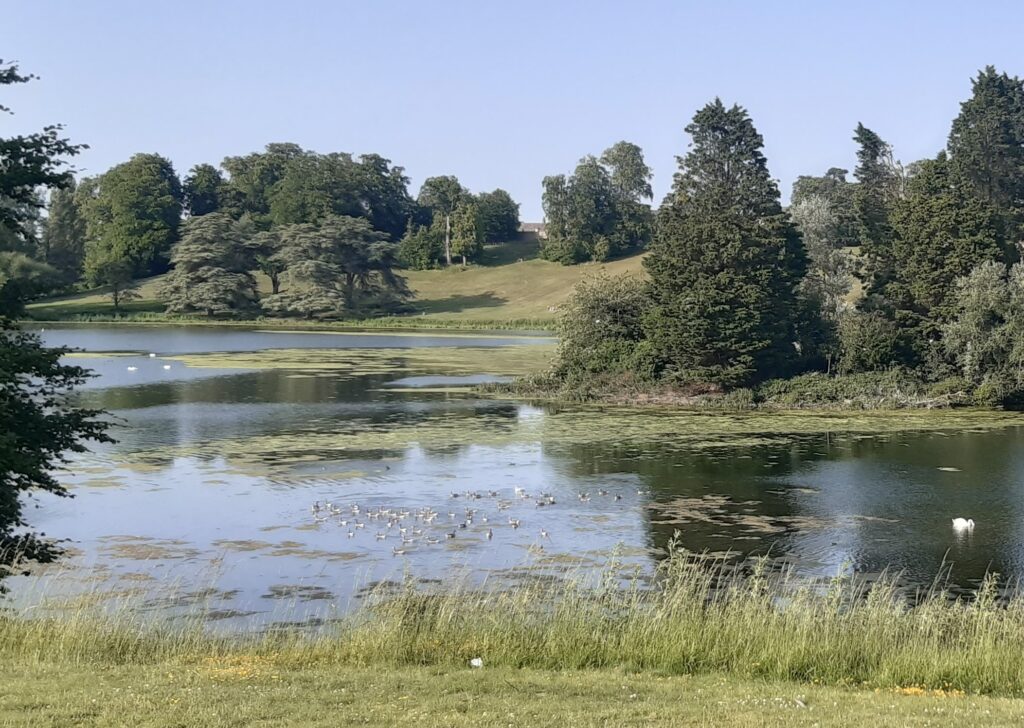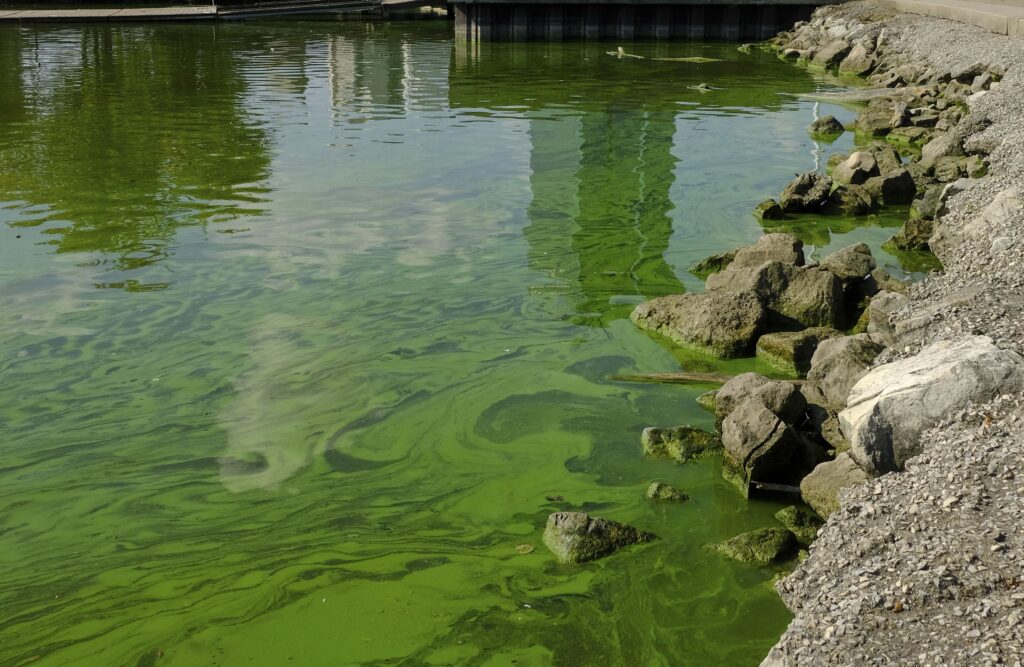As the summer is warming up, so too is the risk of algal blooming. Although an important aspect of marine and freshwater eco systems, algae can become dangerous if the population increases rapidly.

Algae is an important food source for fish, amphibians, and insects, and moderate amounts of algae can indicate that the water is healthy, but when conditions are ideal for growth, a rapid increase in production can occur, called a bloom. Algal blooms can develop organically but have been an issue due to the combination of warm weather and excess nutrients in the aquatic environment from point sources such as sewage outfalls and non-point sources such as agricultural land.
Blooms tend to develop in areas of still or slow-moving water, such as lakes and ponds, where the lack of flow enables the bloom to occur. The image shows a bloom in the lake at Blenheim Palace from the impoundment of the River Glyme. There is also concern that blooms can occur in major rivers, such as the River Thames, during dry conditions on areas of slack water, which can gradually migrate downstream with the flow.
Algal blooms can block sunlight from reaching other plants in the water and use up oxygen in the water which suffocates fish and other creatures. In addition, many species of algae can begin producing damaging and harmful toxins.
Blue-green algae, or cyanobacteria, poses a health risk to people, pets and wild animals who come into contact or ingest it. The algae tend to be a vivid green colour, sometimes with a turquoise band when it forms a scum along the shoreline. It’s like a thin layer of green paint and if you poke it with a stick it breaks up, like a cloud of dust in the water.

Harmful algal blooms can cause skin rashes, eye irritations, vomiting, diarrhoea, fever and muscle and joint pain. Blue-green algae have caused the deaths of dogs, horses, cattle, birds and fish across the UK.
Children and pets should be kept out of the water if you see a green scum. You can’t tell if an algal bloom is toxic from looking at it so it’s safest to assume that it is and keep away from it. If you are concerned that you, or your pets, have been in contact with blue-green algae we would recommend that you seek medical or veterinary advice.
There has been much work over the past few decades in the UK understanding the causes of algal blooms, identifying suitable policies, and promoting better environmental management to prevent them occurring. Many of the policies in place, for example to control the quality of treated sewage pumped into the river and reduce pollutants from agricultural land, were implemented in the UK through EU directives. With the impact of Brexit it is uncertain whether these will continue, especially as the UK government was actually against implementing some these policies while it was a member of the EU.
As the UK water industry is entirely within the private sector and driven by the need to make profits, one way water companies can look to increase profits is to reduce costs by lowering environmental standards. Significant funding for research into algal blooms and the whole subject of water quality came from the EU, and over the years Hydro-GIS Ltd has contributed to a number of studies. Following Brexit, this funding is no longer available. There is therefore a real concern that the current situation in the UK will lead to a detrimental impact on the quality of our waterbodies.
